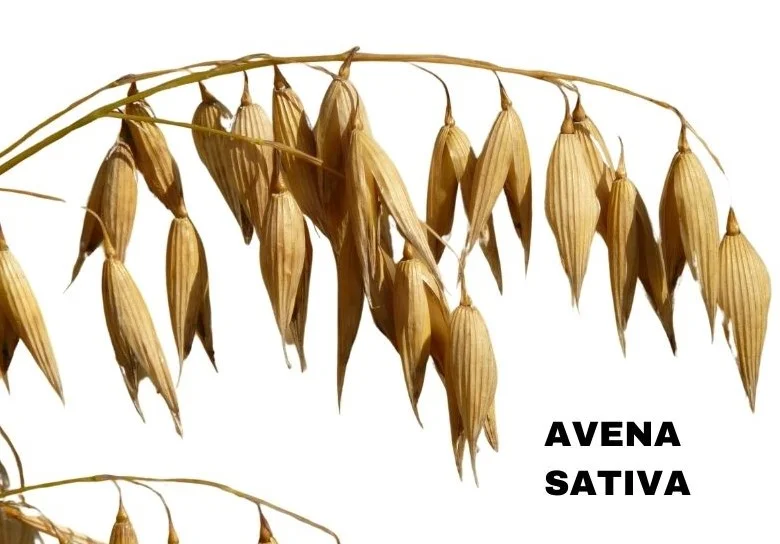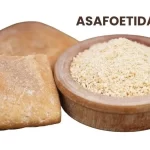Avena sativa, commonly known as the Common Oat, is a medicinal plant renowned for its selective action on the brain and nervous system, enhancing their nutritive function.
This remedy is indicated for a range of conditions including nervous exhaustion, sexual debility, and addiction to morphine.
With its extensive therapeutic applications, Avena sativa is an asset in homeopathic practice.
Table of Contents
ToggleSOURCE INFORMATION

Scientific Classification
- Kingdom: Plantae
- Phylum: Angiosperms
- Class: Monocots
- Order: Poales
- Family: Poaceae (Gramineae)
- Genus: Avena
- Species: Avena sativa
Origin and Habitat
Avena sativa, commonly known as Oat, belongs to the family Poaceae (Gramineae).
It is a species of cereal grain grown for its seed, which is also called oat.
Oats are believed to have originated in the Fertile Crescent of the Near East and were domesticated around 3,000 to 4,000 BCE.
They are now cultivated in various temperate regions worldwide, including North America, Europe, and parts of Asia.
Historical Background
Oats have been cultivated for centuries and have played a significant role in human nutrition and agriculture.
Historically, oats were primarily used as animal fodder, but they gained popularity as a human food source over time.
Oats are known for their nutritional value, providing dietary fiber, vitamins, minerals, and antioxidants.
They are commonly consumed as oatmeal, rolled oats, oat flour, and oat bran, and are also used in various food products such as breakfast cereals, granola bars, and baked goods.
Medical and Therapeutic Uses
In addition to their culinary uses, oats have also been utilized for their medicinal properties.
Avena sativa is known for its adaptogenic and nervine properties, making it beneficial for supporting the nervous system, reducing stress, and promoting relaxation.
Oat straw, derived from the stems of the plant, is often used to prepare infusions or extracts for these purposes.
Additionally, oats are recognized for their cardiovascular benefits, digestive health support, and potential role in managing blood sugar levels.
CLINICAL APPLICATIONS
- Alcoholism
- Negative effects of morphine addiction
- General debility
- Neurasthenia (nervous exhaustion)
- Palpitations
- Excessive sexual activity
- Insomnia
THERAPEUTIC ACTIONS
Avena sativa exerts a targeted influence on the brain and nervous system, particularly enhancing their nutritive function.
It is known for its empirical use in substantial doses, typically 5-15 drops of the tincture, preferably diluted in hot water.
This remedy is particularly beneficial for addressing conditions of nervous exhaustion, sexual debility, and addiction to morphine.
Avena sativa serves as an effective tonic for debility following debilitating illnesses and is especially beneficial for treating sleeplessness, particularly in individuals struggling with alcoholism.
KEY CHARACTERISTICS
- Selective action on the brain and nervous system.
- Favourable influence on nutritive function.
- Indicated for nervous exhaustion, sexual debility, and morphine addiction.
- Effective in conditions like tremors, paralysis, rheumatism of the heart, and colds.
- Noteworthy for its role in addressing insomnia, especially in alcoholics.
PARTICULAR ORGAN SYMPTOMS
- Mind: Inability to focus on any one subject, indicative of mental exhaustion and nervous strain.
- Head: Nervous headaches, especially during the menstrual period, often accompanied by a burning sensation at the top of the head.
- Female: Common Oat is beneficial for addressing menstrual irregularities, including amenorrhea and dysmenorrhea, associated with weak circulation.
- Male: It proves useful in treating sexual debility in males, such as impotence and spermatorrhoea, resulting from excessive indulgence.
REMEDY RELATIONSHIP
- Compare with Alfalfa, which shares general tonic properties like Avena sativa and is also indicated for scanty and suppressed urine.
Comparison with Other Medicines for Sleeplessness
- Coca: Restlessness prevails despite feeling sleepy.
- Coffea: Constant movement prevents deep sleep until around 3 a.m., followed by fitful dozing due to mental hyperactivity and an influx of ideas.
- Kali phos: Sleeplessness stemming from depleted nerve power due to excessive work, stress, and anxiety.
- Passiflora: Sleeplessness observed in asthma and hypertensive patients.
- Piscidia: Insomnia attributed to worry and nervousness in neurotic individuals.
DOSE
Tincture in ten to twenty drop doses, preferably diluted in hot water.
Note: Avena sativa, when administered with hot milk, has been notably effective, especially among the elderly population. It addresses the inability to maintain focus, particularly when caused by factors like masturbation or sexual irregularities.
Frequently Asked Questions
What is the recommended dosage for Avena sativa?
- Avena sativa is typically administered in tincture form, with doses ranging from ten to twenty drops. It is preferably diluted in hot water for optimal effectiveness.
How does Avena sativa compare to Alfalfa in terms of therapeutic properties?
- Avena sativa and Alfalfa share similar general tonic properties.
- Both remedies are beneficial for addressing conditions of weakness and debility.
- However, Avena sativa is specifically indicated for nervous exhaustion, sexual debility, and addiction to morphine, while Alfalfa is known for its nutritive properties and is indicated for conditions like scanty and suppressed urine.
What are the specific symptoms indicating the use of Avena sativa for female complaints?
- Avena sativa is beneficial for addressing menstrual irregularities in females, including amenorrhea (absence of menstruation) and dysmenorrhea (painful menstruation), particularly when associated with weak circulation and nervous tension.
Meaning of Difficult Words
- Amenorrhea: Absence or cessation of menstruation.
- Dysmenorrhea: Painful menstruation.
- Spermatorrhoea: Involuntary discharge of semen without orgasm.
- Impotency: Inability to achieve or maintain an erection.
- Paralysis: Loss of muscle function in part of the body.













Leave a Reply